Make It Plain! A Wandering Son Returns Home
By
Johnie Scott
(This was originally an email letter sent to Reverend Paul Tidwell,
Pastor of
Hello Pastor:
“Make me to know thy ways, O Lord, teach me
thy paths.”
Psalm 25:4
First of all, I am sorry for not getting
back to you earlier. I have been really involved in a number of activities. What
I hoped would turn out to be an hour or so of personal time for us to just sit
and talk did not prove to be possible. Though I tried to make it otherwise, the
time simply was not there. This was true even in the matter of completing the
Final Exam for the Advanced Bible Study Class. As you know, I had to switch
dates for the presentation of my own mini-sermon – the first half of the final
exam for the course. I did so based upon having to attend a major Pan African
Studies conference taking place at the same time in
That extra time was not a consideration. What was a major consideration, though, was the conference itself – the annual professional gathering held by the National Association of African American Studies (NAAAS), one of the major academic societies for me as a scholar and for my academic discipline. My being invited to participate as a presenter and moderator at this conference had been confirmed for several months, long before the Advanced Bible Study Class had been formed. I have given papers to the national conferences of NAAAS in the past which have the added distinction of not only presenting before an audience of one’s peers, but having that work published as part of the conference proceedings – a major distinction in the “publish or perish” world of Academia.
I come up before the University for promotion to Full Professor in the next few months. Participating
in the formal conferences held by one’s professional societies and
organizations is a major requirement in any consideration(s) related to
promotion. With hotel reservations, airline tickets and conference fees all
being paid by me long in advance – coupled with the fact that making this
presentation is an expectation held by all colleges and universities in
evaluating their faculty – I had no option but to meet those requirements. One
good spin-off, though, is that my being in
It is in regards to that Final Exam, better yet, my entire Valley Experience where spiritual matters are concerned, that I write this letter. I want to share what I hope will be received as an awakening on my part, a returning to one’s roots by someone who holds a great deal of respect for you. I want to talk about exactly what it is that led me and my wife to leave Inspired Word after the past five years of Christian fellowship. I have thought, have prayed long, and deeply, in an effort to determine exactly who it is and what I want as a believer and follower of our Lord and Savior Jesus Christ. This soul-searching has been going on for many months, but intensified over the past few weeks to the point where it sometimes felt as though I was engaged in spiritual warfare with Satan. Doing so took me back to where I literally found that I was examining my own past works with a clear purpose in mind:
“Create in me a clean heart, O God, and put
a new and right spirit within me.”
Psalm 51:10.
I found my own heart in that examination. In this personal introspection, I underwent a spiritual cleansing, a rebirth of the love and enthusiasm that I once had for the church. I was able to rekindle that fire for doing right, a flame had been slowly reducing itself to a very low ebb of late. That revelation, for this is what it has become, is what I now bare witness to.
I was raised in
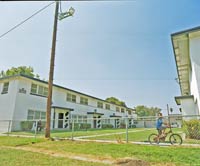
These are part of the five housing projects – Jordan Downs, Imperial
Courts,
one-half of the population residing in
For the next 15 years, my family lived on
I remember telling my mother about it. I remember how she came, along with my uncles and aunts, on that Sunday afternoon. Rev. Fisher baptized me and several others in the Baptismal Pool in the back of the church, behind where the choir sang every Sunday and right beneath the picture of Jesus Christ himself. The Church Elders that included Deacon Willie Thornton and his wife, Sister Armenta Thornton, allowed me the privilege to “teach” one of the Sunday school classes on a regular basis. A short, cream-complexioned, educated, articulate and outspoken woman who was always well-dressed with a penchant for wide-brimmed, fancy hats that made her standout in any gathering, Sister Thornton taught English at Providence Theological Seminary. Her favorite expression, one she used quite often, was “It is only what you do for Christ that will last!” I got to know her because Sister Thornton was Superintendent for our Sunday School.
When the
I loved being a part of the Church during
those years. That love was revealed in everything that I did. I went to Bible
Study during the week, while the summers found me attending
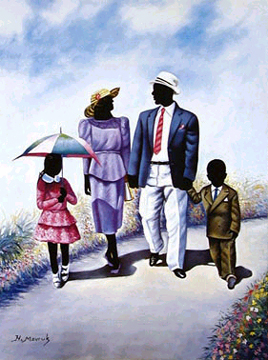
In
predominantly black communities like the
described by the
author, the
in bringing
fathers together with their sons, in having the men of the community
interact with the
youth.
(I wracked my brains trying to think of their first names when it struck me that ours was a time and generation where young people, especially children, did not call or address adults by their first names. One of the very first lessons my parents taught me, and it was a painful one at that, was to “put a handle on the names of grown people.” In other words, you used Mister or Miss, Sir, Dr., Uncle, Auntie, or Grandmother when referring to adults. Never, but never, would you have ever heard me, my sisters, or the other young people in the neighborhood calling an adult by their first name. And for those adults who insisted it was no big thing, that we call them by their first names if we wanted to, those individuals were quickly corrected by my mother or whatever other adult was present about this social taboo. All of that to say, try as I might, I cannot remember what the first names were for Brother Carter or Sister Carter, even though they were just like family, or kin.)
Their family was so much a part of
Curtis Piggee and his family represent a
permanent part of those memories, that communal history. Not just memories, but
my life. Curtis Piggee was big, standing some 6’8” in height while weighing
some 250 pounds. To no one’s surprise, he played center on the varsity
basketball team at Jordan High which was a power in
As today’s young people say when talking
about sports and their favorite athletes, Curtis was “the Man” when it was
basketball season; the same attitude held true for football and track seasons
with the Charles family, and especially son Ronnie Charles. There were four
sons and one daughter in the family – Donnie, Ronnie, Rudolph and Ralph, or
“Rabbit” as we called him with Barbara being the daughter. Rabbit and Barbara
were one year behind me while Rudolph and I were the same age, in the same
grade, and attended the same schools all the way through
Even now, I remember how proud, how excited
I was when going to the track meets at
There was a very fundamental reason for
why we referred to one another and our community as
But just as they were
part of Jordan High, the Charles family, the Piggee family, the Carter family
and many others were all members of 103rd
It was while attending Jordan High,
though, and definitely while going to Harvard and Stanford that I strayed away
from the church, from
Bobby Newman, on the other hand, grew up
in
He was our James Dean, our rebel without a
cause excepting rather than living East of Eden, he was Lost in South
central
And yet, that is not how Bobby Newman grew
up. Like so many in
Both brothers tried to escape by joining
the military, a choice many young men in
I certainly do remember listening to Rev.
Newman preach as a young man about that moment when he saw the light, and
accepted Christ in his life. I was still
a teenager, and had the chance to hear Rev. Newman’s powerfully affecting
testimony each Sunday at
Rev. Newman, make no mistake about it, was
good! But this was now the mid-1960s, the era of
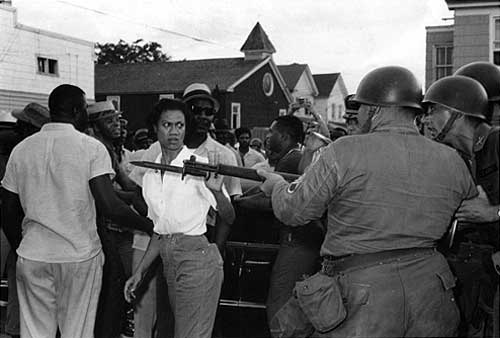
Civil rights activist Gloria Richardson faces off National Guardsmen in
The years I was at Stanford spanned from 1966-1972, the Vietnam War Years, the years of protests on college campuses with Kent State and Jackson State, the years of turmoil and activism in the urban cities with race riots from one part of the nation to the other, the Civil Rights Years that found thousands of college students involved in Voter Registration, the Mississippi Freedom Summers, the conflicts in the cities that involved the Nation of Islam, the Black Panther Party and the police. It was easy, so very easy for a young person like myself to get caught up in the ebb and flow, which I did even while thinking that I was involved in the struggle.
I think back to the visit made that Martin
Luther King, Jr. made to Stanford where he was scheduled to speak at
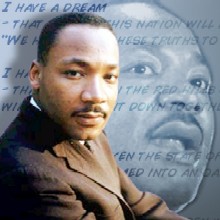
Dr. Martin Luther King, Jr., educated at
in
militant young blacks
of the 1960s.
Lo and behold, we were admitted, and seated in the front of the church no less to hear the entire speech and talk, afterwards, with Dr. King. Truth be told, that was a very humbling experience even as we exulted afterwards in “representing for the Black community to make sure that more than affluent whites heard what King had to say.” I left my church behind and, sadly, I left God behind as well. Or at least, it appeared I did for little did I know that though I may have tried, the Lord never left me
In the meantime, the church I grew up in
moved from its original location on
On the other hand, in June 1975 I came to
the
Just as surely as I am a product of
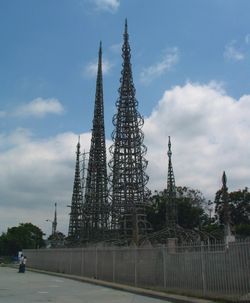
Bessie was baptized by Rev. Milton
Marshall, pastor of
The week following our wedding, Bessie joined
Rev. Newman, a little more than ten years later in 1987, officiated in the burial of my mother with the church services held at Citizens of Zion. Not much longer after that, he buried my father with the services held at Citizens of Zion as well. Through all of these experiences, Rev. Newman has been a Man of God who I see as a Spiritual Elder and confidant. He has buried very close friends of the family as well – maybe that makes a man a minister, I don’t know. But it does make him special. And this is true not just for the man, but the church itself, I now realize, has always been an integral part of me – the kids I grew up with remained members during those many years, they married there just as I did, some have had their funerals there, others have brought their babies to be christened and dedicated, or baptized as I was when a child.
To make a long story short, I visited
Citizens of Zion this past Sunday. The church has now moved again since I was
last there on Santa Fe Avenue along with my other siblings to bury our father.
It has moved into an even larger space, now occupying two city blocks with
buildings for a Sunday school and Napoleon Fisher Fellowship Hall, all of this still in
It felt strange, very uncomfortable when
the moment came, responding when the call for “Visitors, Please Stand” was
made. I found myself looking around, seeing so many friendly, smiling faces
from the years I came of manhood. One of those was Cora Mack. She and I had
been schoolmates from literally kindergarten at
Once visitors had been formally recognized, I sat down with my wife and looked through the church program, to go on a further trip down Memory Lane in seeing where there was now a Willie and Armenta Thornton Scholarship Fund enabling many youth to attend college, seeing where the Citizens of Zion Men’s Auxiliary would be meeting in the Napoleon F. Fisher Fellowship Hall, all those familiar names which launched a cascade of pleasant memories that flowed through my body and soul.
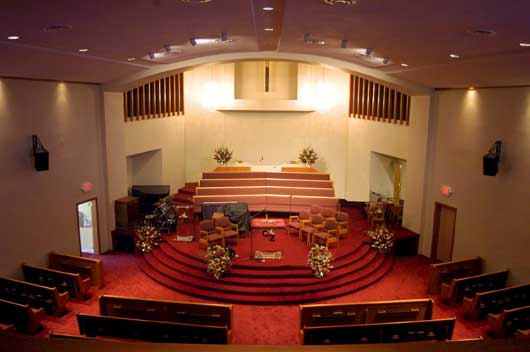
The Sanctuary, Citizens of
With Rev. Newman sitting behind the pulpit while presiding over the church, I listened as various speakers got up to invite the congregation to join in concerted, community action to protest the Three Strikes Law which has unfairly punished so many Black and Brown people, listened as yet other speakers spoke of Health Fairs and the need for members to attend to their physical well-being “for the body is God’s holy vessel.”
I found myself smiling where Rev. Newman
then said he was “going to make sure not to preach longer than 30 minutes so
everyone could go home at a decent hour.” I smiled because I said this is not
the Bobby Newman I know, not if the Spirit was on the move that day…and it was.
I joined with the entire congregation, foot-stamping and all, urging this Man
of God to bring the Word, to teach, to
make it plain.
Amid the exhortations of the congregation last Sunday, I could not help being reminded with Rev. Newman in the pulpit of the tale of the Prodigal Son, that seemingly lost child who left the family to wander abroad, thinking himself in search of personal fortune and gain but coming to a far greater understanding in the end, and that is the importance of never forgetting from whence it was that one came. For me, the truth is that I never lost faith in God, no matter what environment I might have been in, what circles I may have traveled in, what relationships I may have entered in, or broken. I had simply been away from what was always my Church Home.
“Though you have not seen him, you love him;
and even though you do not see him now, you believe in him and are filled
with
inexpressible and glorious joy.”
1 Peter 1:8
When Morning Service was over, I made my way to the front of the church and waited to gain Rev. Newman’s attention. He was surrounded by congregants with all types of requests, questions and for some, just simple greetings they wanted to pass along or share. To my surprise, though, he stepped down from the pulpit and grabbed me up with both hands while saying, “To God be the Glory, Johnie Scott, is this you?”
A wave of emotions roiled in my body at this recognition. I found myself saying, “Reverend Newman, I called the church this morning to find out exactly when morning service started today. Was that you who answered the phone?”
His eyes grew large as he answered yes to my question. I quickly responded, “I thought so, that’s why I hung up the telephone. I didn’t want to identify myself.”
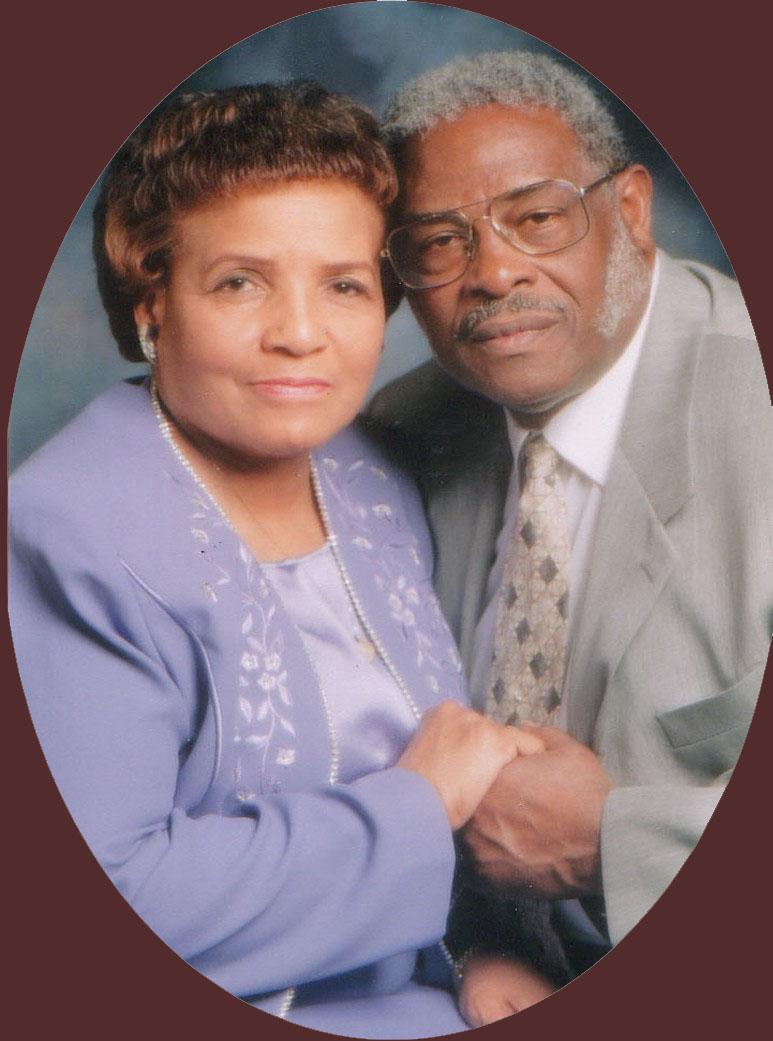
Sister Charmaine Newman with husband for more than half-century, Rev. Bobby T. Newman.
His eyes were quizzical so I added,
“I didn’t want to make a big thing out of it. Seems like every time I go
someplace where people know ahead of time, they make a big deal out of it. I
just wanted, Reverend Newman,” I said, “to be able to come in this morning like
regular people and taste the spiritual meal you were putting out.”
His eyes then moved away from mine and the next words that came from his mouth was a call to Charmaine, his own wife, who had been talking all the while with Bessie. A petite, attractive light-skinned lady dressed in white and wearing a white hat, Charmaine Newman came forward and greeted us with a big smile on her face. She and Rev. Newman have been married for 53 years. Her younger sister Chiquita sang at our wedding. Once she and Rev. Newman married, then Charmaine became one of those from my childhood where the individual had a title and last name, but you seldom used the first name, if ever.
Rev. Newman embraced Bessie right there at
the pulpit. They shared laughter and memories. Nostalgia scented the air around
us as Sister Newman reminisced about our marriage and how flowers filled that
church that bright June day, then listening as she went back even further to
those years at
I reached over to Bessie, who was standing to the side and took her by the hand. “Reverend Newman,” I said, “In another month, it will be 31 years since you married the two of us.”
I decided to share with Rev. Newman what it felt like to look at the Church Program and read, in print, mention of the Napoleon F. Fisher Fellowship Hall and the Thornton Scholarship Fund, these being people I knew and loved. I then asked him about the Carter family and he quickly said, “Johnie, they have all gone to glory. Betty Carter died from cancer.”
Rev. Newman paused for just a heartbeat, looking me straight in the eye before these words came from his mouth, “And I know you remember Mary Mitchell?” Didn’t I ever remember Mary or, better yet, how could I ever forget her?
Mary Mitchell had been our next-door neighbor for so many years in the Jordan Downs. Even after my family moved out of the projects, Mary and my mother remained the best of friends. Mary along with a group of Black women from the neighborhood, came together in forming one of the strong grassroots community organizations in Watts, that being Mothers Anonymous, mothers like Evalina “Mama” Nunn whose sons and daughters were either caught up in gang violence or victims of it. This same group of women were activists in forming the Greater Welfare Rights Organization, a group headed by Mrs. Johnnie Lee Tillmon from the Nickerson Gardens Housing Projects and Ruth Robinson from the Jordan Downs, a group of women from all five of the housing projects in Watts that became nationwide in establishing a forum for single parent black mothers receiving public assistance to speak out.
I thought back to the many nights when Mary had eaten dinner at our apartment while talking with my mother about different issues and concerns, my mind traveled back to the many afternoons when I played with Mary’s son Albert when he visited with us in the projects, the many Sundays where we worshipped together in the same church on 103rd Street, and that day in particular when Sister Mary came to Citizens of Zion to pay respects in helping to bury her first and very best friend in the projects, my very own mother.
Now, Rev. Newman was telling me, Mary Mitchell, too, had “gone to glory.” He had done Mary’s funeral as well. Listening and taking it all in as he spoke, so many thoughts and images filled my mind as we stood there.
A church is more than brick and mortar. If
nothing else, what I have shared with you should speak to the fact that the
church is that community of people, of believers, whose common faith, beliefs,
ambitions and fellowship make them a whole people, a family – One God, One Faith, One
Baptism.
I look back now on these sixty years of having been on the planet, on all of the life experiences – of open heart surgery, friends gained and lost, people who entered my life and whose lives I, by the same token, entered and touched. All of which matter and have meaning. I look at Citizens of Zion Missionary Baptist Church – the church which I first found the Lord Jesus Christ in and which has been the spiritual glue in my life – knowing without a doubt this is my church home.
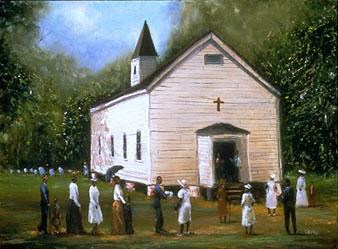
One of the primary roles filled by the
was as a “safe
haven,” a place where wayward young black men looking
to find an
anchor in their lives often found it in the spiritual community that was the church.
For some folk, there is no way they can return home. I am referring to people who have been excommunicated, banished, the door closed in their face, that home has disappeared from their horizon. There is no welcome mat on the front porch awaiting their return or even visit.
For others, though, that door is always an open one. I know the truth of that observation now. And where you, Pastor, where your wife and all the members of Inspired Word Christian Fellowship will always be special, I wanted to take this time to do the right thing in letting you know exactly were it is that I am at. This is my testimony, this is my witness:
“…Christ lives in me. The life I live in the
body, I live by faith in the Son of God, who loved me and gave himself for me.”
-- Galatians 2:20
I close this letter with the hope that mine, the Scott Family, will always be welcome visitors and friends. Hoping I have not written too much, but at the same time wanting to really open up in fully expressing to you and the members of Inspired Word where matters are at. The years that we have been able to fellowship together at Inspired Word have been good ones indeed, but it is time to return home.
Yours in the Service of Our Lord and Savior Christ Jesus,
Brother Johnie Scott
©
Monday,